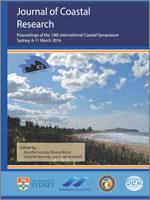Del Río, L.; Gracia, F.J., and Benavente, J., 2016. Multiple-source cliff erosion in Southern Spain: current risk and future perspectives. In: Vila-Concejo, A.; Bruce, E.; Kennedy, D.M., and McCarroll, R.J. (eds.), Proceedings of the 14th International Coastal Symposium (Sydney, Australia). Journal of Coastal Research, Special Issue, No. 75, pp. 1072 - 1076. Coconut Creek (Florida), ISSN 0749-0208.
This work analyses coastal erosion causes, impacts and management strategies in two sandstone cliffs in SW Spain: El Almirante (EA) and Fuente del Gallo (FG). Five sets of aerial photographs spanning the last 50 years were used, combined with detailed field inspection. Retreat rate of the cliff top in EA is 0.8–1.6 m/yr, increasing over the last decade to 4 m/yr at some points. This poses a serious risk for infrastructure located on the cliff top, and cliff recession leaves an outstanding palaeontological site exposed to wave attack. Erosion rates in FG are lower, but there is a significant risk to beach visitors due to mass movements involved in cliff retreat. Interventions to mitigate erosion impacts in EA have consisted in tetrapod deployment and concrete fencing, while in FG stabilization measures include removal of unstable blocks, soil nailing, draining tubes, seeding, a riprap and beach nourishments. However, these measures have only had a limited success, as the main causes for cliff erosion are related to marine and subaerial processes enhanced by rainfall and cliff fractures. Undermining of the cliff base by waves in FG and in eastern EA triggers rock falls, which are easily dismantled by waves, resulting in a rapidly retreating cliff face. In central EA rotational slides are responsible for cliff top recession, favoured by a plastic substratum of marls. Future projections of shoreline position indicate a likely increase in potential damage generated by erosion in both sites, leading to the need for adopting alternative mitigation measures.





